May 21, 2021
A new acronym is joining the car world’s already long list; FCEV or Fuel Cell Electric Vehicle. Hydrogen cars, which are FCEVs, are creating a buzz – an emission-free buzz that is.
OnlineLoans.com.au takes a look at hydrogen cars.
What are hydrogen cars?
“This appears as water vapor and warm air from the vehicle’s tailpipe.”
To put it simply, hydrogen cars are vehicles that use hydrogen as fuel. The hydrogen is stored in a special crash-tested fuel cell, hence the ‘FC’ in FCEV. Oxygen is combined, or ‘reacted’ with hydrogen which charges batteries and powers electric motors and, in turn, drives the car.
This chemical reaction extracts electrons from hydrogen atoms. These electrons create electricity which charges the batteries – hence the ‘E’ in FCEV.
The by-product of this chemical reaction is water and heat – a big brag for hydrogen cars. This appears as water vapour and warm air from the vehicle’s tailpipe.
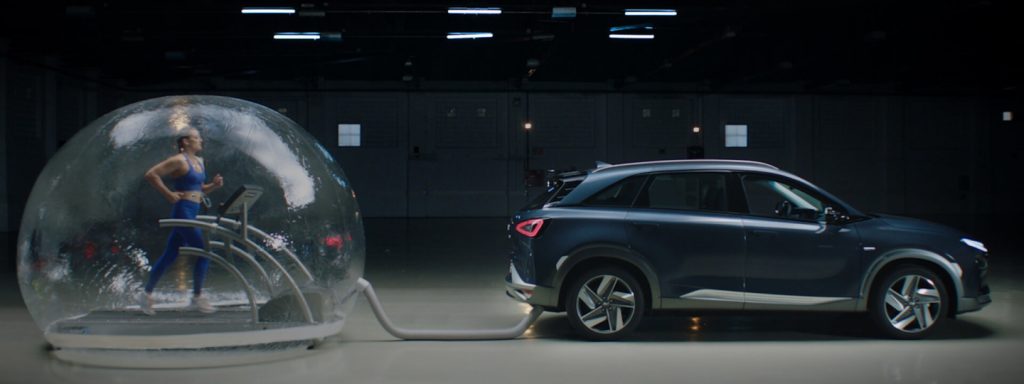
Hydrogen cars are different from electric vehicles like Teslas.
Hydrogen cars have their own power plant onboard – the fuel cell and consequent chemical reaction. EVs, on the other hand, require charging from an external source – you plug them into a wall socket.
Hydrogen isn’t just for cars
This zero-emissions power has seen use in other forms of transportation. For example, in September 2020, Airbus revealed hydrogen-powered aircraft in the works.
City busses, trucks and trains have also seen hydrogen-powered versions. As fossil fuel-powered public transport already reduces emissions per person compared to private vehicles, hydrogen versions are a win for the environment.
What hydrogen cars are out there?
There are a few hydrogen cars on the world’s roads already, here are some examples.
Toyota Mirai
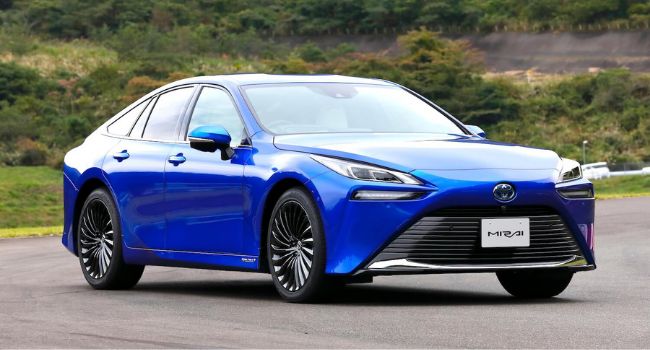
With a name that means ‘future’ in Japanese, the Mirai is one of the world’s first and most well-known hydrogen cars. Launched in 2014, the current Mirai can achieve a range of 650km.
But you can’t buy one, at least not yet. As of April 2021, Toyota is only offering the Mirai on lease to selected organisations and businesses at a cost of $1,750 per month for three years. Upon completion of the lease, the cars get handed back to Toyota.
Honda FCX Clarity
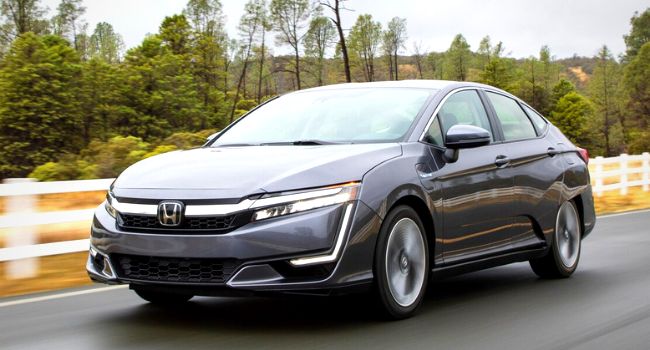
(source: motortrend.com)
Not currently offered in Australia, Honda’s four-door sedan, the FCX Clarity, has a range of just under 580km.
Hyundai Nexo
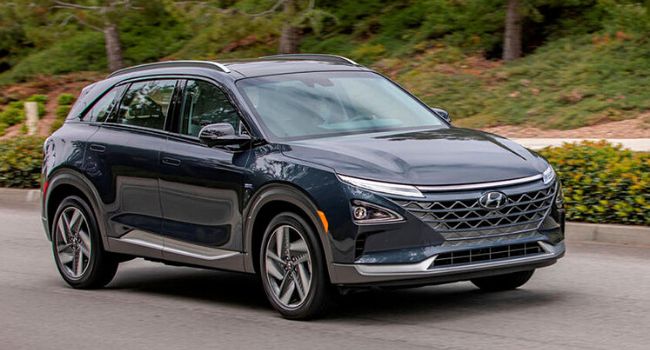
(source: carindigo.com)
Unlike the Mirai and FCX Clarity, the Nexo will soon be ‘for sale’ in Australia to both private and business customers.
‘For sale’ means an ‘ownership package’ offered through special order through Hyundai Australia. This means you can’t actually buy it outright like a regular car, but enter into an ‘agreement’ presumably similar to a lease. At least it’s available to private customers.
The Nexo is an SUV – even more attractive to Australian buyers – and can offer around 660km in range, depending on the driving configuration.
Advantages for motorists
“you’ll get the quick refuelling and range of a petrol car PLUS the zero emissions of an EV.”
Other than the huge smile on the environment’s face and bragging rights for drivers, hydrogen cars (in theory) combine the practicality of ICE (internal combustion engine) vehicles and EVs.
Refuelling time is similar to a regular petrol car. Filling up a hydrogen fuel cell is pegged at less than 10 minutes – only slightly longer than a standard ICE vehicle. No need for the long and numerous hours to charge an EV.
The range is also comparable to ICE and electric vehicles. Most hydrogen cars deliver around 550 – 650km from a full tank of ‘gas’.
In other words, you’ll get the quick refuelling and range of a petrol car PLUS the zero-emissions of an EV.
Most hydrogen cars average around 3.6 – 3.9L / 100km – litres of hydrogen that is, not petrol.
But zero-emissions don’t come with zero problems
Despite being the most abundant element in the universe, hydrogen doesn’t come without problems. Firstly, it doesn’t exist in its pure form on Earth.
Producing hydrogen
The dirty truth about hydrogen is that extracting it produces carbon dioxide. The cheapest and simplest method of producing the element is by extracting it from methane. This is known as ‘steam-methane reforming’. When heated and pressurised, methane reacts with steam to produce hydrogen. The energy needed to create the heat often comes from fossil fuels.
Methane isn’t a friend either. As per the European Environmental Bureau, the gas is around 86 times worse than CO2 as far as the environment goes.
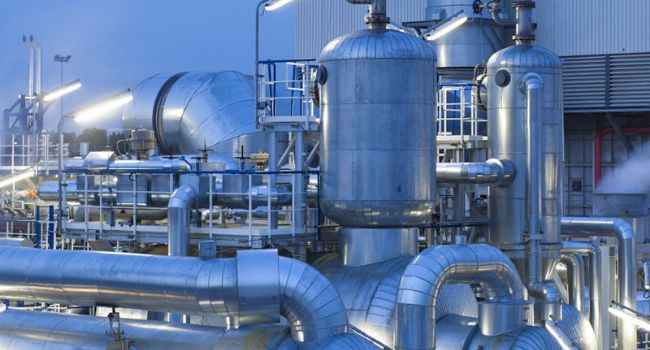
(A steam-methane reforming plant. Source: engineering-airliquide.com)
Another cleaner way to produce hydrogen is through the electrolysis of water which forces water molecules to split into their familiar H2 and O molecules. This process still requires huge amounts of power – especially when fuelling nationwide fleets of vehicles.
So, making the fuel negates some of the zero-emission driving.
It should also be noted that hydrogen cars still contain batteries – the part of EVs that get criticised for their large carbon footprint.
Storing and transporting hydrogen
Unlike petrol and diesel, hydrogen is not easy to store and transport. It needs to be cooled or compressed from a gas into a liquid. This costs more energy.
Most estimates put hydrogen at losing around 50 – 60% of its energy to production, storage and transport by the time it makes it into a vehicle. In other words, for every 100 ‘units’ of hydrogen produced, only 40-50 actually make it to power the car.
The typical loss of energy when moving electricity over wires is only around 5%, so you’ll have 95% left to use – much better than the 45% or so you’ll have left with hydrogen.
Charging stations
With the world’s current love of EVs, there’s much more focus and resources going into electric charge stations than hydrogen charge stations. Here’s a breakdown of vehicle fueling/charging stations in Australia at the time of writing;
- 6,500 petrol stations
- 2,500 public EV charging stations
- 4 hydrogen refuelling stations
EVs may have beaten hydrogen cars to the post. It’s unlikely that public and private resources (money) will switch gear and be diverted from EV to hydrogen facilities.
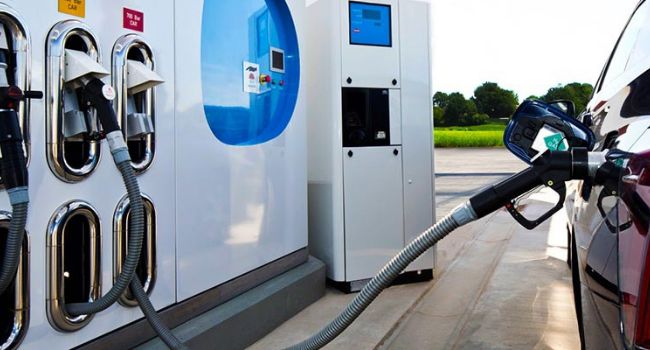
(A hydrogen charging station in the United States. Source: weh.com)
The ballpark cost of a full tank of hydrogen is around A$70 – much more than the cost of a full charge in an EV.
At the end of the day
Hydrogen cars offer some great tech and insights into what could be a viable alternative to fossil fuel in the future. However, with all the innovation, research and development going into and coming out of EVs, it seems hydrogen is too little, too late.
To recap the pros and cons of EVs and hydrogen cars;
Hydrogen cars today
Pros
- Zero emissions from the tailpipe
Cons
- Lack of refuelling stations
- Underdeveloped and expensive fuel source (dollars and emissions)
- Difficult to own outright
- (Very) Limited model range
EVs today
Pros
- Becoming more affordable
- Growing model range
- Simple and safe to charge
- Minimal environmental impact (especially when charged from green sources)
Cons
- Large (but decreasing) manufacturing carbon footprint
- Slow charge times at home
Sign Up to the OnlineLoans.com.au Newsletter
Get offers, contests and promos delivered straight to you inbox
